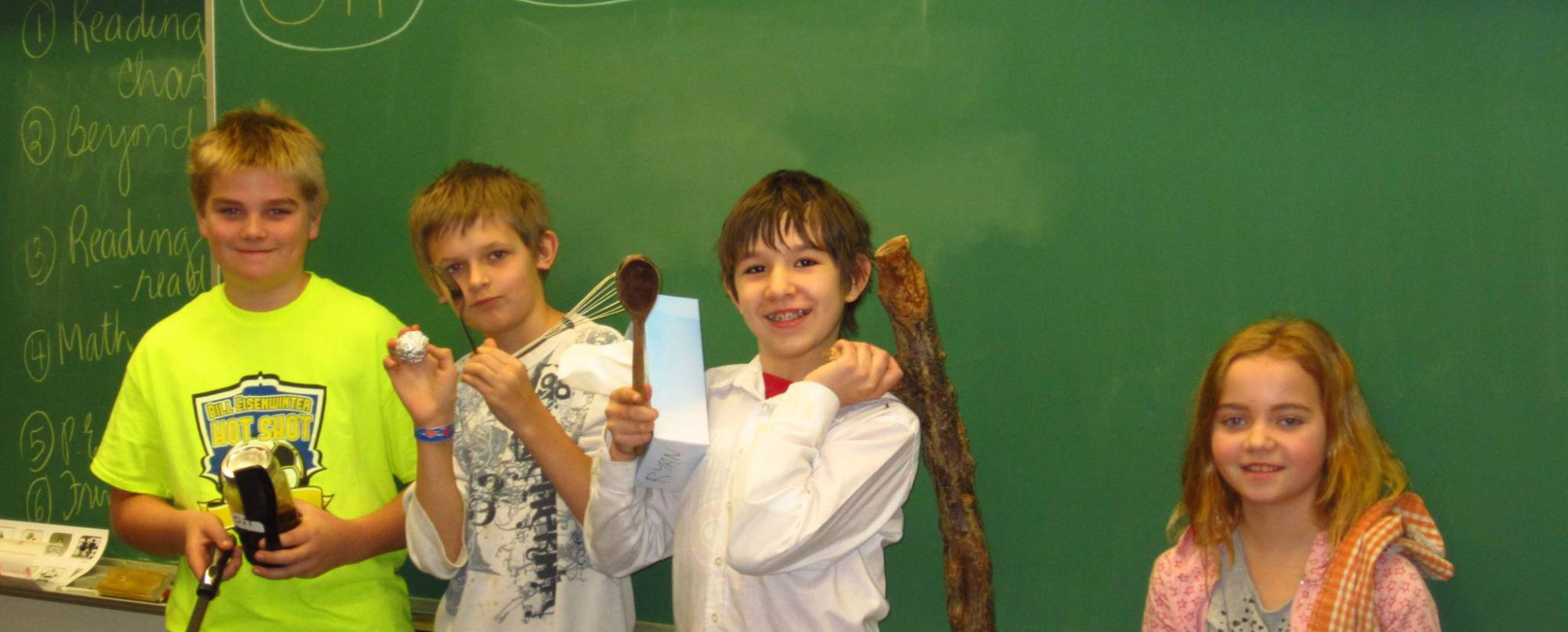Today’s lesson at Twin Rivers Elementary was all about the first step in ANY product’s lifecycle: Raw Material Extraction! All of the stuff in our lives, whether it looks natural or not, was made from raw materials taken from the Earth. Some of these raw materials are renewable resources (wood, cotton, fish) and some are non-renewable resources (oil, iron, copper). Either way, the extraction of any raw material has some sort of impact on the environment. Mrs. Evdokimoff’s Grade 4/5 class started the lesson by investigating the raw materials behind some everyday objects. Four students stood at the front of the room to represent four different raw materials (Wood, Oil, Cotton, Iron). The rest of the class then had to sort through a pile of stuff and identify which raw material each item was made from. Some were easier than others. Corbin, who represented wood, was given a wooden spoon and a box of Kleenex right away. It took some thinking to match the plastic comb and spatula to Ty, who represented Oil. Aryanna (Cotton) ended up with a dishtowel and a pair of jeans and Braiden (Iron) was matched with a stainless steel fork and whisk. It was fun and sometimes surprising to guess the raw materials behind items we use everyday. We all agreed that we don’t often take the time to think about where our stuff comes from and how it’s made. After this activity, the students all checked the tags on their shirts to come up with a list of raw materials used to make clothing. We were surprised by how many synthetic materials popped up on our list. Things like nylon and polyester are actually forms of plastic and come from oil. We also noticed that many of our shirts travelled a LONG way to get to us. We figured it probably took a lot of oil (a non-renewable resource) to ship those shirts from Bangladesh or China on ships, planes and trucks! Since more than half of the class was wearing jeans, we discussed the lifecycle of a pair of jeans. Cotton is the raw material behind denim and is extracted from fields of cotton plants. We learned that cotton crops are sprayed with fertilizers and pesticides and Taya was "surprised by the number of bugs and animals that may have been poisoned to make [her] jeans". We also learned that once cotton is turned into denim, it is dyed and treated with chemicals to make it the desired colour and to give it that fashionable "worn" look. Braiden "hadn’t thought about the dye that makes jeans blue that probably also pollutes the water". We agreed that it might be better to choose clothing made from natural fibres and with less chemicals. Buying local products made in Canada would probably also conserve a lot of resources by reducing the amount of transportation needed! Olivia said "It’s amazing the amount of work it takes to make our stuff" and Akaysha agreed that the lifecycle of stuff is "a really long cycle". Today’s lesson made us all rethink the way we look at our stuff. In the next two weeks, we will learn more about the lifecycle of stuff and how each and every one of us can make choices to reduce our impact on the environment!

It's All From the Earth (whether it looks like it or not!)
School:
Twin Rivers Elementary



